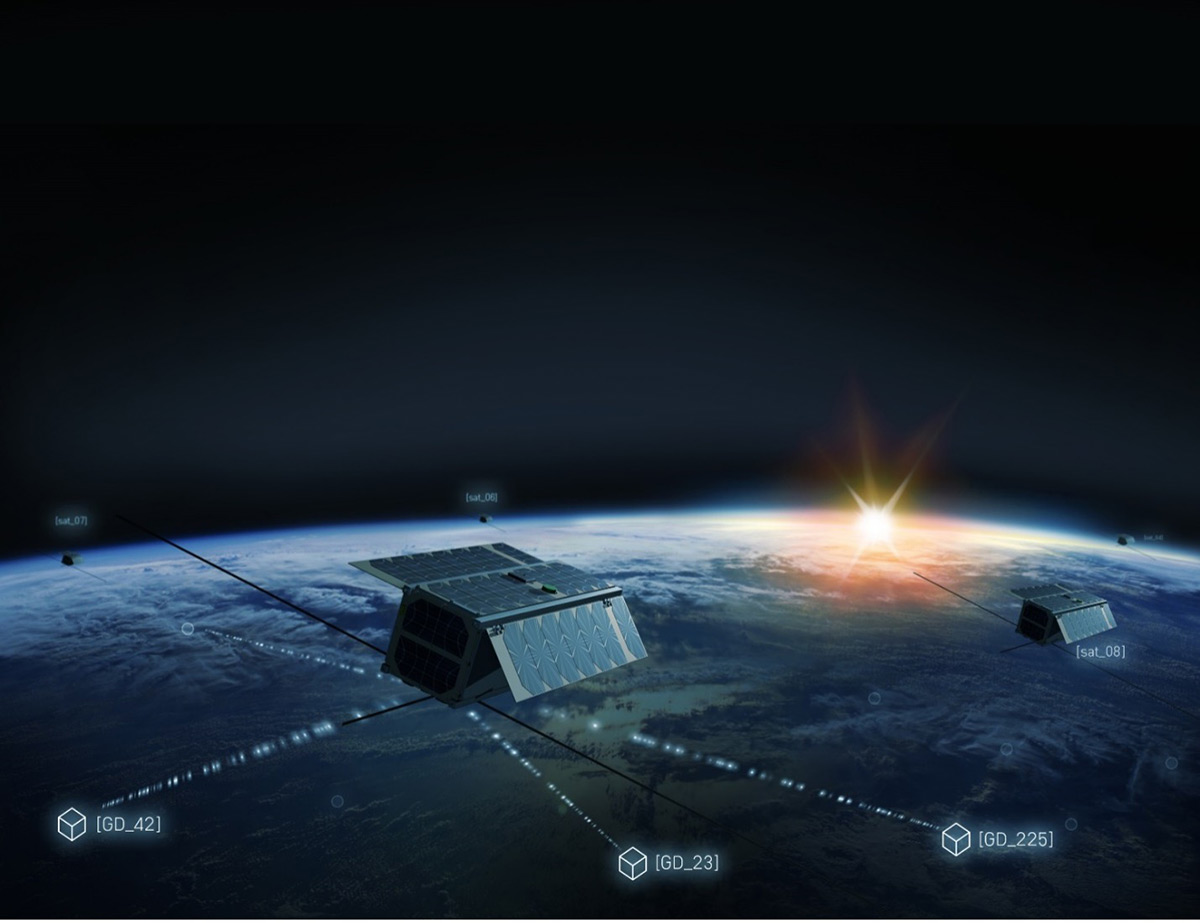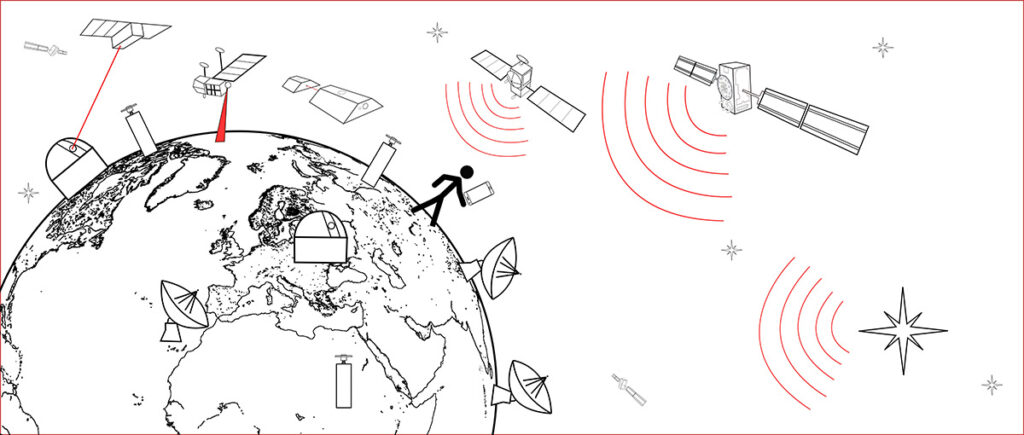How satellites help us understand the world

More than 2,000 satellites are currently in orbit around the Earth, collecting important information about our planet by means of numerous sensors. Without them, the complex interactions in the Earth system would be almost impossible to grasp.

The Earth is in a constant state of change: gigantic heat transfers in the Earth’s interior cause the continents to move, resulting in earthquakes, volcanoes and mountain ranges. Weather and climate events influence our daily lives. Space weather affects various processes, such as the propagation of satellite signals. Other interactions between Earth and the cosmos include the gravitational forces of the Sun and Moon, which determine the tides. The complex interplay of the various factors in the Earth system leads to continuous change, for example in biodiversity, soil composition or rising sea levels.
Satellites are our artificial observers, equipped with a multitude of sensors that collect information about the Earth system. The signals are exposed to various interactions on their way to/from the satellite. Effects caused by these interactions, such as delays, changes in signal strength or frequency, form the basis for our analyses. This enables scientists to register and analyze changes and, if necessary, to warn of hazards.
At our exhibition booth, an Astrocast cube satellite awaits you and you can get live information about the status of selected satellite missions. We will also give you an insight into how we at the Institute of Geodesy and Photogrammetry at ETH Zurich convert satellite signals into information about the Earth system. A 1.5 meter high globe shows impressive animations on plate tectonics, gravity field, tides, atmosphere and climate.

